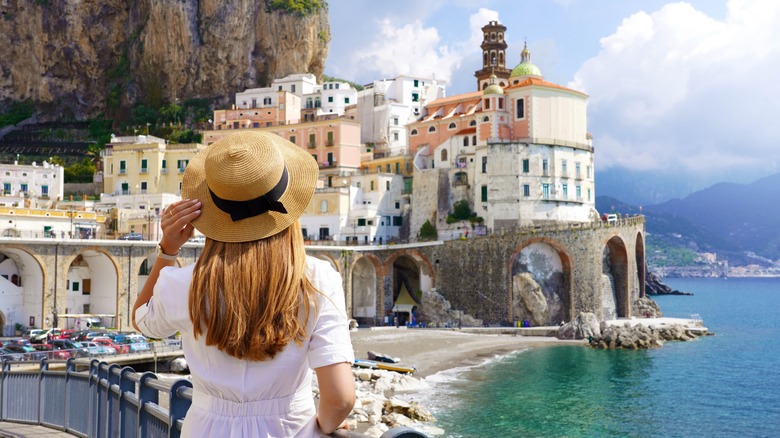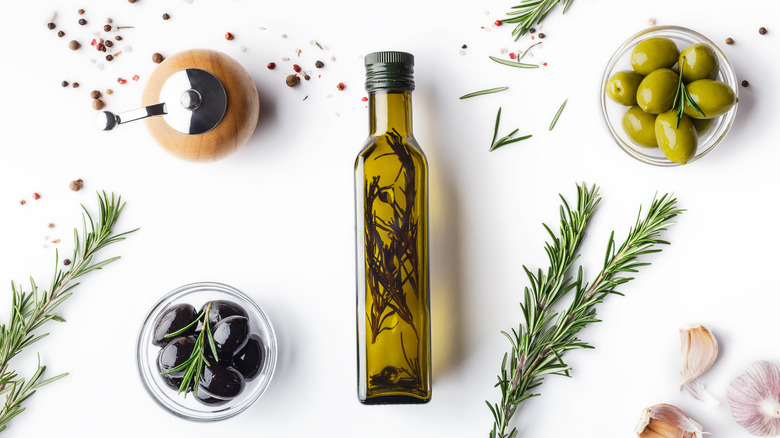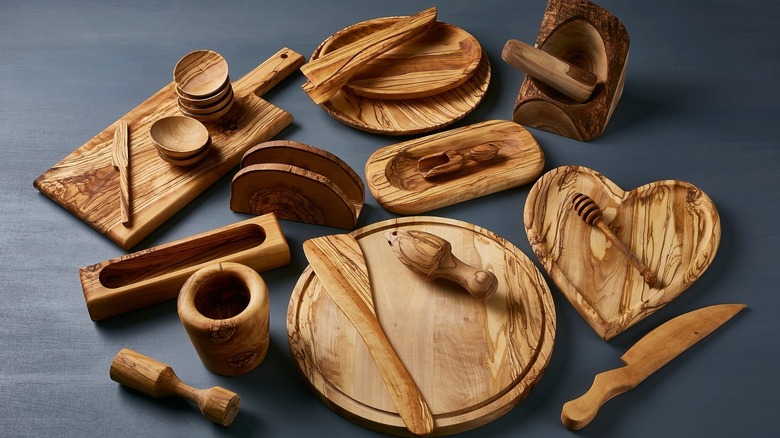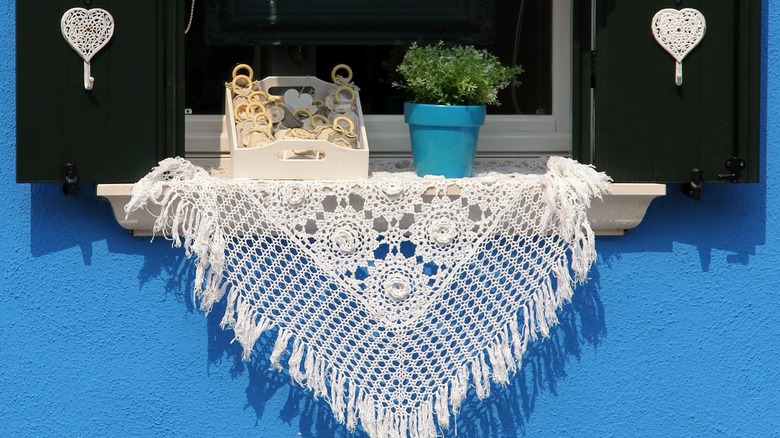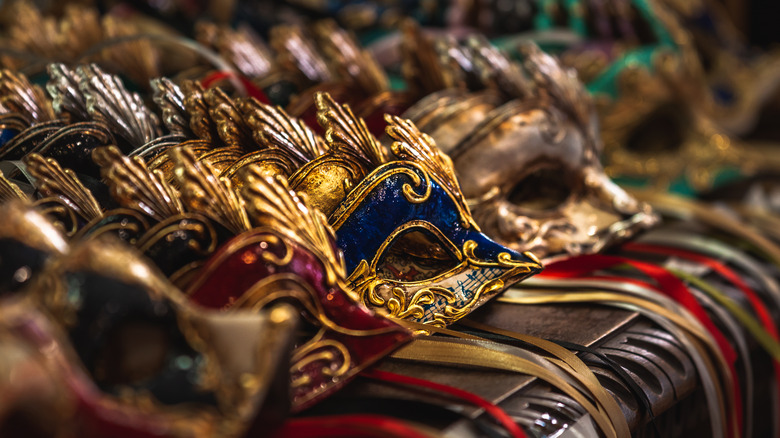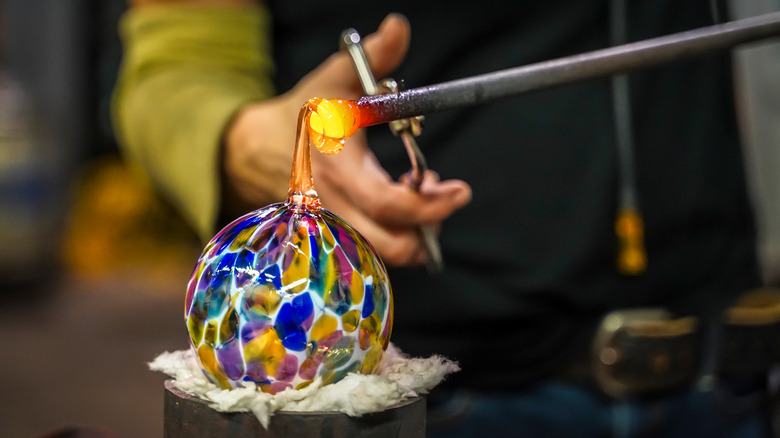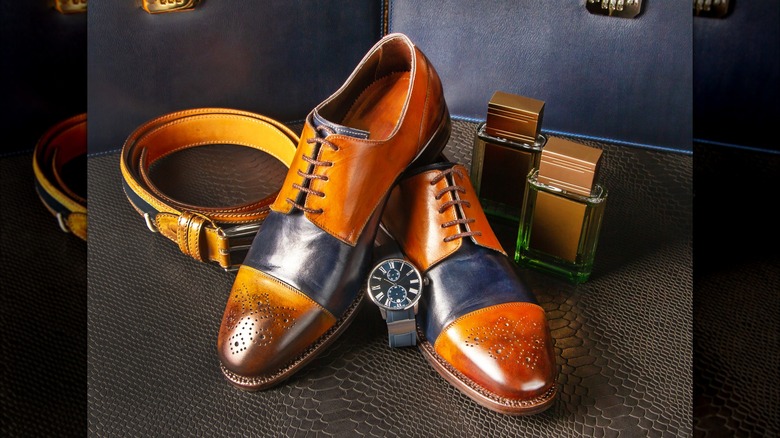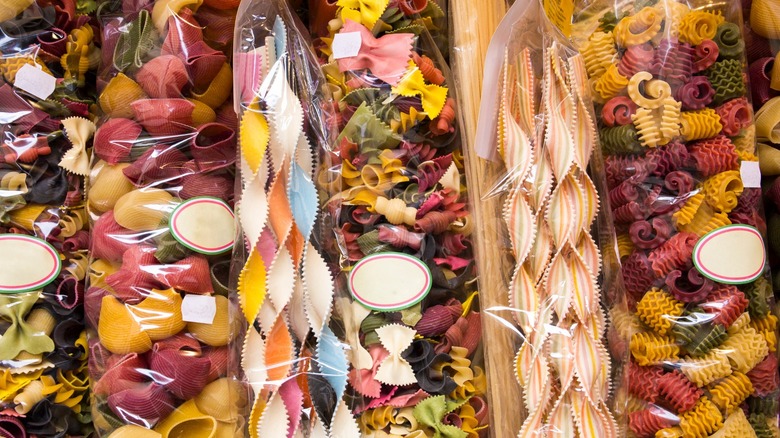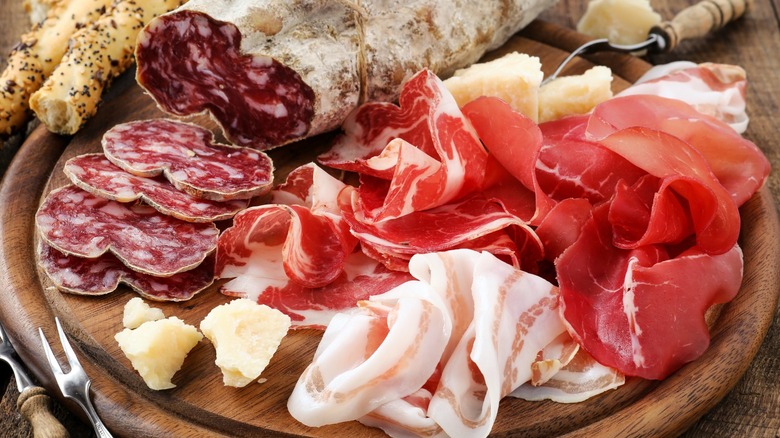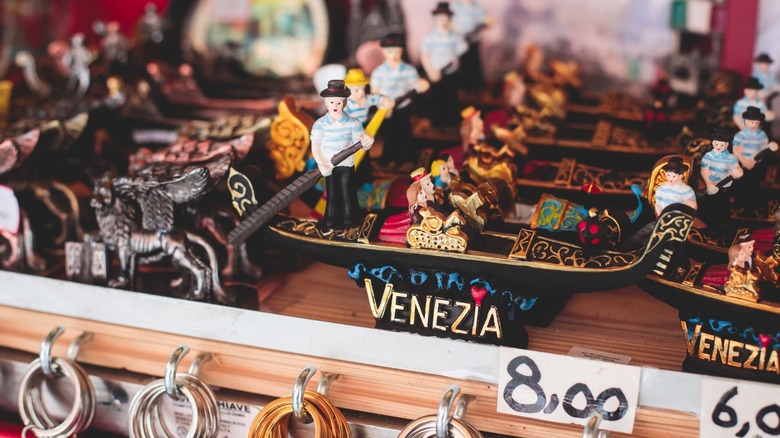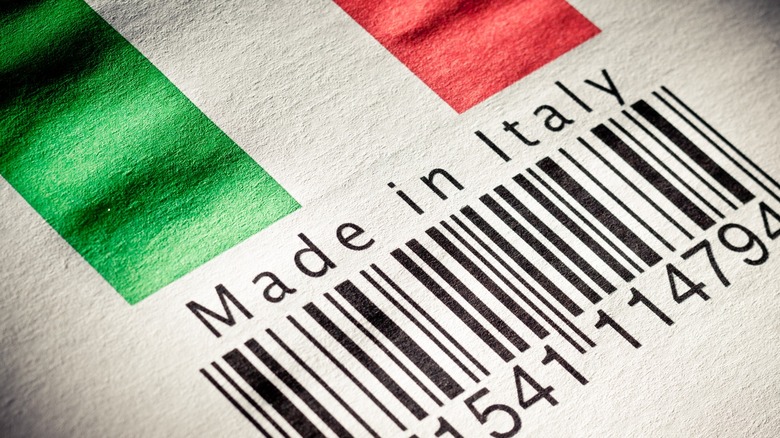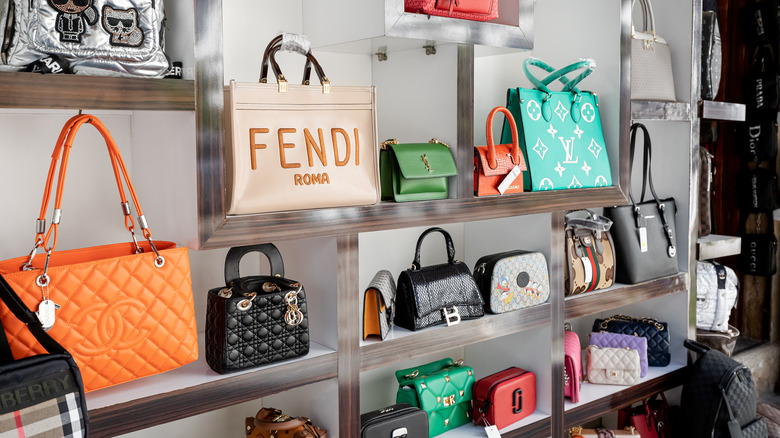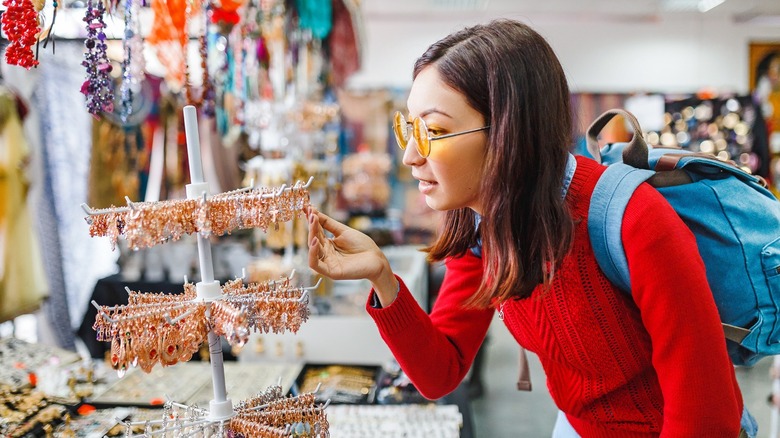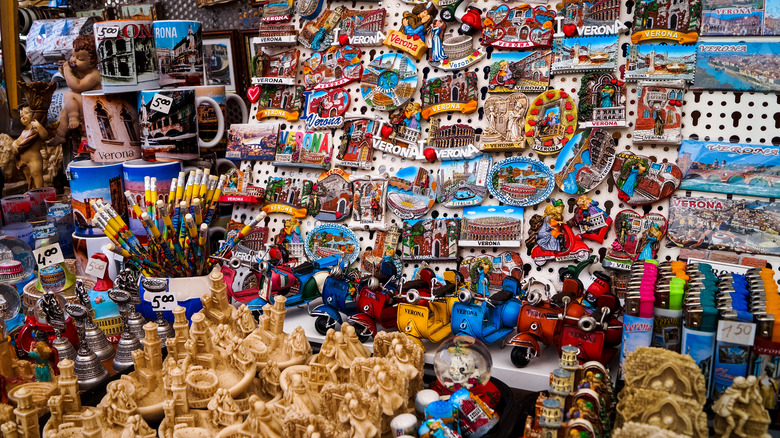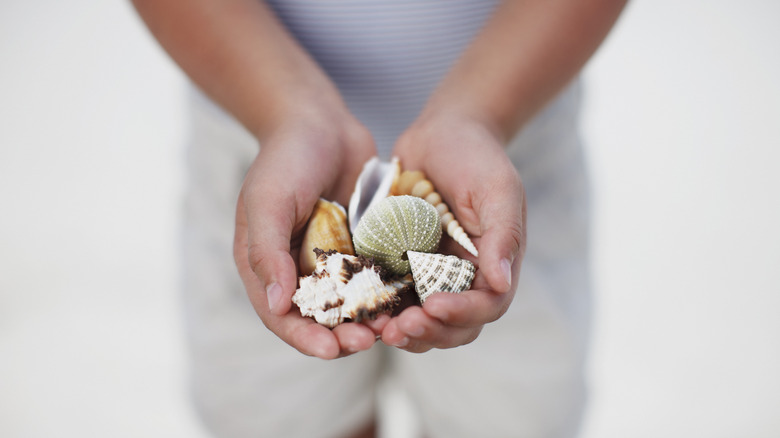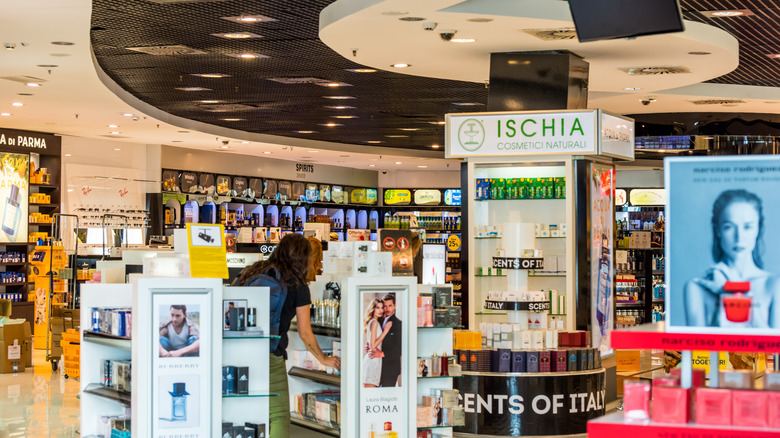8 Souvenirs You Should Get In Italy And 8 You Should Skip
Are you headed to Italy soon? If so, you probably want a souvenir to remember your trip — that perfect memento to add to your collection or gift to someone special. But with a plethora of tourist shops and commercial goods, it's hard to know what to buy, especially if it's your first time in Italy. Does the souvenir genuinely represent the country? Or is it just a kitschy item that will end up in your giveaway pile in a matter of months?
Ultimately, you want to invest in something that will last, the type of item that naturally weaves its way into the fabric of your everyday life. And when it catches your eye or guests ask about it, you recall your trip fondly, reminiscing on the good times had. Alternatively, if it's a consumable good, it should be a beverage or food product you can't find back home ... something that will be thoroughly enjoyed upon your return. However, we'd avoid anything mass-produced and manufactured outside the country, ultimately driving profit away from local artisans and producers.
So, how do you spot authentic products from cheap knockoffs and souvenir scams? Our own travel experience has taught us how to avoid common tourist traps. We've also researched Italian destinations and the history of their local crafts. Through these methods, we've uncovered eight of the best souvenirs you should get in Italy and eight you should skip.
Get: High-quality wine and limoncello
Nothing says Italy like good wine or limoncello. However, to truly savor Italy's quintessential souvenirs, you should know how to pick a high-quality bottle. After all, you wouldn't want to head home with something you could find at your average American grocer. Of course, flavor is a crucial element, and the best way to sample a variety is through tastings and visiting producers.
If you can't crack open a bottle yourself, you'll need to decode the labels. According to Wine Enthusiast, certain phrases like DOCG (Denominazione di Origine Controllata e Garantita) signal that the winemakers follow the highest guarantee of quality production. Just below this is DOC (Denominazione di Origine Controllata), which isn't as strict but still reliable. IGT stands for Indicazione Geografica Tipica, which allows winemakers to use more creative methods and unique grapes. And if you see a varietal followed by "Superiore," you can expect it to be a top-notch bottle.
When it comes to limoncello, there are some key things to avoid. It should smell like lemons but should never make your mouth pucker. Instead, limoncello should be a sweet, refreshing aperitif or digestif. To ensure it's locally made, check the label to see where the company sources its lemons. You're on the right track if it mentions anywhere along the Amalfi Coast. Limoncello is the star of this region, and if you're driving down these stunning coastal roads, you'll want to return home with a bottle or two.
Get: Olive oil and balsamic vinegar
Italy is known for its olive oil and balsamic vinegar, and the two make the perfect pair. Whether drizzling these condiments over salad or soaking them up with a thick slice of bread, they add a rich flavor and complexity to any meal. You can find olive oil and balsamic vinegar all over the world. Still, some of the best varieties come from Italy, and traditional balsamic vinegar is only made in Reggio Emilia and Modena.
To ensure you get the good stuff, go for extra virgin olive oil and avoid pomace oils. EVOO is less processed, so it retains its fresh, fruity flavor and natural health benefits. True balsamic vinegar will be called "aceto balsamico tradizionale" and come with the "Denominazione di Origine Protetta" stamp, or DOP for short. This mark ensures the vinegar was made solely from high-quality grape must. Lastly, don't shy away from small-scale farms. The best olive oils and vinegar are often a family affair and sold in small batches made with love.
Get: Olive wood products
Olive oil isn't the only thing Italians make from olive trees. Craftspeople use olive wood to make a whole host of kitchenware like cutlery, rolling pins, salad bowls, and charcuterie or cutting boards. This wood has a golden brown base, darker contrasting streaks, and unique burling patterns. As it ages, it only takes on a richer appearance and color. Not only is it aesthetically beautiful, but its density and natural oils make it a long-lasting wood. To top it off, it doesn't pick up odors or bacteria easily, so it's an ideal choice for houseware.
No two pieces of wood are ever the same. So if you're looking for a unique yet functional souvenir, olive wood products fit the bill, and to make it last forever, avoid soaking them in water and never put them in the dishwasher. A quick handwash and the occasional light oiling should keep it looking fresh and beautiful.
Get: Perugia tablecloths and Burano lace
Are you looking to add an Italian flair to your home decor? Perugia textiles and Burano lace make the perfect souvenir. They both have a long history in Italy and represent the regions they originate from. Perugia was even known for its exquisite tablecloths and alter coverings in the 12th century, and the techniques used to make them have been passed down through generations. The detailed craftsmanship and designs make them beautiful as pillow covers, tablecloths, runners, or wall art. On the other hand, Burano lace has a more delicate appearance and is made using needle and thread to create intricate geometric or floral designs. It can be displayed similarly to Perugian textiles and adds a touch of elegance to any centerpiece.
You'll find these textiles all over Italy in specialty shops and markets. However, the best place to find them is in their cities of origin. Giuditta Brozetti is a popular purveyor in Perugia, and to find authentic Burano lace, visit the Lace Museum on the island. Nowadays, much of the lace isn't entirely handwoven, but this museum should point you in the right direction, and you might even stumble across some local artisans weaving onsite.
Get: Venetian masks
When you think of Venetian souvenirs, masks inevitably come to mind. But these decorative costume pieces are far from cheesy keepsakes; they come with a rich history — and a little mystery. Since the Middle Ages, they were used to add colorful flair to parties and were particularly popular during Carnival celebrations. And during this period, if you were to engage in illicit activities, using these masks to hide your identity wasn't uncommon.
Not only do Venetian masks have a fascinating back story, but they're also beautiful souvenirs. Head to specialty shops focusing on handcrafted masks, such as Ca 'Macana Atelier in Venice's historic center. Opt for ceramic, paper mache, or leather masks over the mass-produced plastic ones. Hang a few on your wall for some mystical Italian charm, or save it for your next themed event. After all, what better way to celebrate your return from Italy than by throwing a masquerade party yourself?
Get: Murano glass
If you've ever seen a glassblower at work, you know just how skilled and special this art form is. If not, when visiting Venice, head to the Venetian island of Murano to observe this intense craft in person. However, don't expect to find modern technology at play. Murano glass pieces are made individually and entirely by hand using ancient techniques. Some artists even employ lampworking, meaning they handmake every piece over a flame rather than using molds.
Murano glass is a wonderful souvenir because each piece is a work of art. No two are identical since they're subject to the artisan's creativity. Plus, there are various options, from small trinkets to large vases. You can ensure authenticity by buying one directly from an artist's workshop, and if that's not an option, do your research and seek out reputable galleries like Vittorio Costantini in Venice and Seguso Viro in Murano.
Get: Leather goods and designer clothing
Italians have a reputation for being fashionable for a reason, so if shopping is one of your favorite pastimes, this is the country in which to do it. Although not cheap, Italy is known to produce high-quality leather goods, and you have them right at your fingertips. Whether you're looking for a purse, jacket, shoes, or belt, you've got options, and finding the best quality is better done in person.
Genuine leather should feel soft yet sturdy with even stitching, and you should check the label to ensure it's locally made. As Firenze shoemaker Mario Bemer explains in an interview with Tuscany Now and More, "'Made in Italy' and 'Made in Florence' both carry a tremendous amount of value. We are world-renowned for crafting the finest handmade products using the best materials available. I believe the centuries-old traditions in artisanship that we have are unmatched by any other place."
But Italian shopping isn't limited just to leather goods. If you love Italian designers, the best place to purchase their items, of course, is in Italy. Local luxury brands are often less expensive here because they're not subject to import tax. And if you're not from the European Union, you might be eligible to receive a VAT tax refund upon exiting. Present your passport when purchasing the item, and save those receipts to claim money at the airport.
Get: Artisanal food products
When it comes to Italian food, just like wine and limoncello, there's no sense in buying something you could find at your typical American supermarket. Many kinds of pasta and marinara sauces are plentiful in the States, and bringing the same things home may save you a few bucks but not feel very special. Instead, opt for artisanal foods that are harder to come by, especially regional-specific items. Take Cremona's famous torrone. This nutty nougat confectionary is popular during the holiday season, and there is even a Torrone Festival every November to celebrate this Italian sweet.
If you do crave Italian classics, go for it. We're not saying to avoid staples like spaghetti, but we'd opt for local varieties, high-end brands, or lesser-known pasta like Sicily's casarecce or Venice's bigoli. And while everyone's heard of Nutella, this isn't Italy's only chocolate hazelnut paste. Try purchasing a jar of gianduia (the generic name for Nutella-like spreads) from an independent producer or a farmer's market. It's likely to have its own unique flavor, and you'd be supporting smaller-scale businesses. Plus, food items often make great souvenirs when exploring Italy on a budget.
Skip: Cured meats
Italy is renowned for its cured meats, including mortadella, soppressata, and prosciutto. Our mouths are salivating just thinking of Italian charcuterie trays. However, we'd enjoy any antipasti while abroad because, unfortunately, cured meats aren't allowed past U.S. customs.
Some people aren't aware of this U.S. customs regulation, and we realize ignorance is bliss. On that note, we're sorry to be the bearers of bad news because you can't unread what we just shared. And while you may be tempted to take your chances, we wouldn't risk it. Those cute little beagles roam baggage claim for a reason, and if they smell a meaty essence hiding amongst your belongings, you'll be forced to part with that precious prosciutto.
When it comes to food-based souvenirs, skip the animal products. The silver lining is this gives you even more of an excuse to savor cured meats within Italy. Order all the speck, pancetta, and luscious lardo you can, and what you can't bring back in your bag, you can carry with you in culinary memories.
Skip: Cheap keychains and figurines
Although they seem like easy keepsakes, cheaply made keychains and figurines rarely last. They are often mass-produced or imported and don't represent the country you're visiting. However, we're not saying skip keychains altogether. We see the advantages of buying one as a souvenir, as they're small, lightweight, and have an obvious function. They also make an easy gift if you like returning with something for all your friends. Go for a higher-quality handmade keychain made by local artisans or one with local elements like Murano glass or leather.
And instead of low-quality replicas of the Colosseum or the Leaning Tower of Pisa, opt for one-of-a-kind ceramic pieces or even art prints. Not only will you support the local economy, but these items will likely hold more meaning. After all, a beautiful painting of the Italian countryside can be admired for ages, but you'll probably move on quickly from a cheap paperweight.
Skip: Anything made outside Italy
The whole point of buying a souvenir is to bring home something representing the country you visited. When you look at the item, you want to remember your time in Italy and reflect on its unique culture, so buying anything made outside Italy is the antithesis of this. Not only are these items usually generic, but they are often made cheaply and in bulk. They don't support the local economy or help to preserve Italy's heritage.
To avoid these imported products, check the barcodes and tags before buying clothing, artwork, or figurines — and beware of cheaper versions of classic souvenirs. For example, the medieval town of Fabriano is known for its ancient papermaking traditions, and you can find beautifully crafted notebooks here. But oftentimes, tourist zones will be full of low-quality, imported versions to fool the ignorant traveler. Read the fine print and look for that "Made in Italy" stamp.
Skip: Counterfeit products
In Italy, it can be tempting to buy that fake Fendi or imitation Armani. These knockoffs are cheaper than the real thing, and some are copied so well that it can be hard to tell it's even fake. However, buying counterfeit products in Italy is not all Gucci. Not only is it illegal, but it can actually get you into serious financial trouble.
According to The Local, Italian officials are cracking down on counterfeit goods. These new laws were enacted in 2018 and are called the "safe beaches" directives because centers of trade often occur along the coastline. These directives target both vendors and consumers of illegal products, and beachgoers who buy a pretend Prada can be fined up to 7,000 Euros. That's definitely not chump change, so if you hope to save a few bucks by buying counterfeit items, realize it might end up costing you much more.
Skip: Non-precious jewelry
Non-precious jewelry can be found anywhere, so it's not a unique souvenir. Additionally, non-precious jewelry is generally of low quality and won't last long. It might also be made of cheap materials that don't look or feel comfortable and may even leave skin irritated or discolored after use. In short, there really is logic behind buying it.
If you really want to remember Italy, it's better to splurge on a long-lasting item. Put in the effort to find something more unique and valuable; it doesn't necessarily have to be made from precious metals and gemstones. Artisanal pieces like a hand-carved cameo have a long history in Italy. Cameo-making, called "Glittica," has existed for thousands of years. It involves carving intricate designs into materials such as shells or gemstones. Torre del Greco is the Italian capital of cameos, but you'll find this artistic style on brooches, pendants, or rings across the country.
Skip: Most items from touristy souvenir shops
Souvenir shops in high-traffic zones often target tourists, who won't know the going rate for goods. You'll end up paying more for an item that really isn't worth it. Think of low-quality items not representative of the local culture or history, like generic pens, hats, T-shirts, ashtrays, or stuffed animals. Chances are, you can find these items anywhere in the world, and perhaps you can find similar yet more authentic versions from an independent supplier.
That being said, some things are easier to find at souvenir shops, like postcards, which make excellent keepsakes and are the perfect way to share your holiday with friends or family. And if you collect fridge magnets, mugs, or shot glasses from every destination you visit, by all means, go for it. Just be aware that you're paying a little extra for that "Italy" written across the front.
Skip: Seashells
Are you visiting the Italian coast? Walking along those sandy beaches, you might have the urge to return home with a seaside souvenir, and what better item than a seashell? Unfortunately, it's forbidden to take seashells or sand from Italian beaches – and for good reason.
According to Euronews, a Frenchman was arrested in 2023 for removing roughly 90 pounds of pebbles from a Sardinia beach. Mind you, this is a preposterous amount of pebbles, and anyone with that heavy of a suitcase is bound to raise some flags at the airport — and leave a dent in the sand. However, even taking a modest amount of seashells can hurt the environment.
If each tourist takes a handful of sand and shells, it can really add up. A 30-year study published in PLOS ONE proved that tourists taking seashells from Mediterranean coastlines damaged the ecosystem over time, causing beach erosion and a decline in organisms that rely on shell availability. So take a picture or a mental snapshot of that shell, and leave the real thing on the beach.
Skip: Duty-free items
It has happened to the best of us. You had such a great vacation that you fully embraced the present. But amidst that holiday bliss, you forgot to buy those everlasting mementos ... and when you arrive at the airport, you scramble to find something remotely authentic. Unfortunately, duty-free shops capitalize on this, and although the prices often don't include taxes, they're not necessarily more affordable than regular retail stores.
Also, these items may not accurately represent the local culture or craft that Italy is known for. And while you'll find the typical alcohol, cosmetics, and confectionaries in duty-free stores, you probably won't have as wide of a selection. Furthermore, you're less likely to encounter handmade or artisanal products since these aren't made in bulk. If you're desperate for that last-minute souvenir at the duty-free before boarding your flight home, stick to high-quality Italian wines, sweets, and luxury brands.
